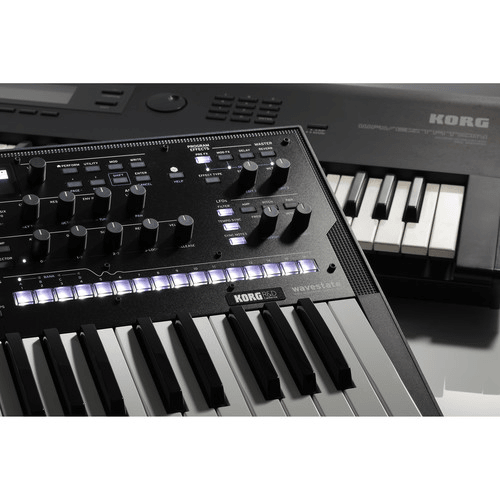

The Wavestation was hampered by memory constraints and user interface limitations of the time, yet it was a beguiling computer that piqued people's interest. It was a sleek, eye-catching instrument with few front panel controls, but more crucially, it was the first device to use Wavesequencing paired with Vector synthesis, courtesy to a cooperation with Dave Smith and the Sequential Circuits team (responsible for the Prophet VS Vector Synthesiser). The four onboard arpeggiators can interact with Wave Sequences for even more possibilities.Korg released their first Wavestation in 1990, following the spectacular success of the M1 and the more sophisticated T series. The result is organic, ever-changing sounds that respond to your control. Finally, individual steps can be randomly skipped, with a modulatable probability from 0 to 100%. Lanes can also randomize the step order every time they play, with realtime control over the range of included steps. Each note in a chord can be playing something different! You can modulate each Lane’s start, end, and loop points separately for every note, using velocity, LFOs, envelopes, Mod Knobs, or other controllers. For instance, a sample may be matched with a different duration, pitch, shape, gate length, and step sequence value every time that it plays. Each of these is a “Lane,” and each Lane can have a different number of steps and its own start, end, and loop points.Įvery time the sequence moves forward, the individual Lanes are combined to create the output. Also added are new characteristics including shapes, gate times, and step sequencer values. Wave Sequencing 2.0 splits apart the timing, the sequence of samples, and the melody, so that each can be manipulated independently.

What if they could evolve in organic, unexpected ways, instead of just repeating? This created ear-catching patterns–but the patterns repeated the same way, over and over. With the Wavestation, each step of a Wave Sequence had a duration, a sample, and a pitch.


 0 kommentar(er)
0 kommentar(er)
